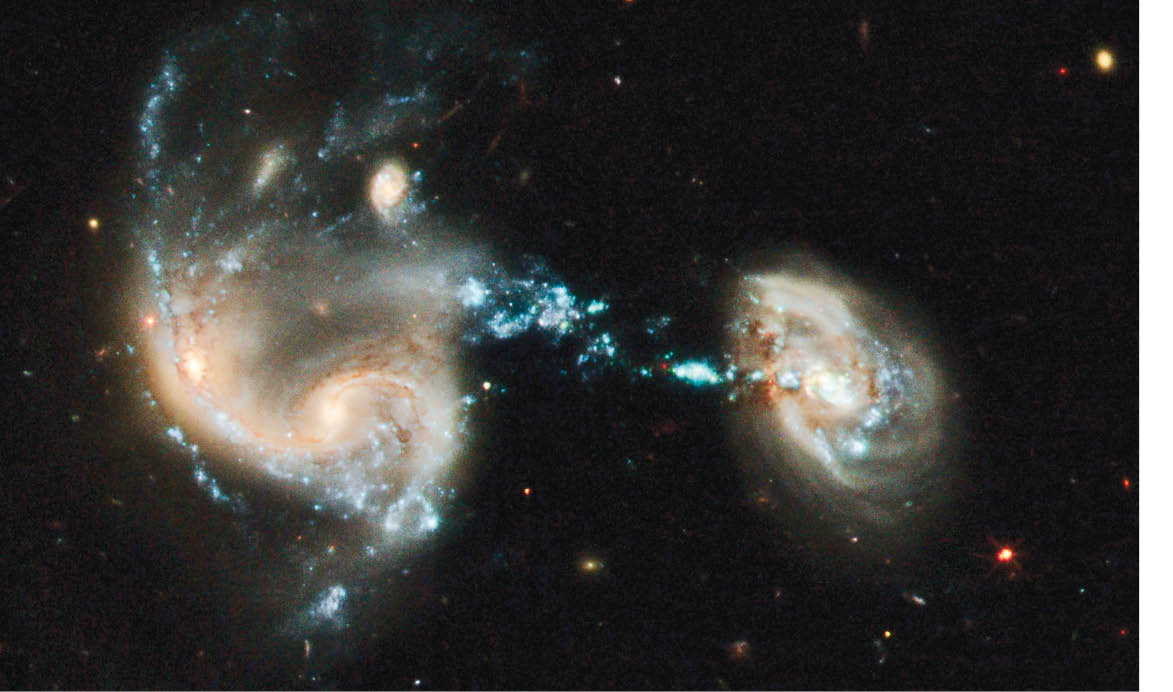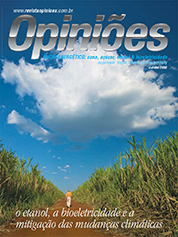Décio Michellis Junior
Advisor of the Vice-President for the Environment at Rede Energia
Op-AA-22
Bioelectricity: the merger of two worlds
The nuclei of two galaxies in the process of merging can be seen in the image (page 57). The bright bluish tail, which appears in the middle of both, comprises several newborn stars. This is currently the view one has of the ARP-274, of the NGC 5679 group of galaxies, whose gravitational forces are attracting one to the others. The galaxies are beginning to interact.
Most of their spirals are still intact, but there is evidence that gas clouds inside each of them form a huge number of new stars, along with a lot of dust. Similarly, in the Brazilian energy matrix, two worlds are close to a merging process:
a. the sugar and alcohol industry: 16.4% of the energy matrix, in 2008, consolidated the second position in the ranking of the main primary energy sources in Brazil, second only to oil and its derivatives;
b. the national electric power industry: 13.8% of the energy matrix in 2008. The newborn star is sugarcane bioelectricity: less than 4.8% of the national electric matrix in 2008, with a promise to activate gravitational forces that are driving these two worlds to encounter each other.
The first, (biomass), focuses on the domestic and international markets; the second, for the most part, focuses on the domestic market: These are different businesses: commodities versus infrastructure. They have different clients and risks. Their production processes are intensively related to sugar and alcohol and co-generation. Investment levels and respective revenues are heterogenous. Every day, new opportunities arise, involving competitive projects and Brazilian technology, that tend to stride ahead in terms of efficiency.
 New businesses are being developed in the energy co-generation industry (throughout the entire chain), with the introduction of new technologies. The issue concerning energy safety (expanding the use of renewable sources, less polluting and less prone to the consequences of international crises) and agroenergy have been transformed and have become a new agricultural paradigm in the world. Regulatory incentives and fiscal benefits afford bioelectricity competitive tariffs.
New businesses are being developed in the energy co-generation industry (throughout the entire chain), with the introduction of new technologies. The issue concerning energy safety (expanding the use of renewable sources, less polluting and less prone to the consequences of international crises) and agroenergy have been transformed and have become a new agricultural paradigm in the world. Regulatory incentives and fiscal benefits afford bioelectricity competitive tariffs.
The search for projects is in high gear, with long-term investments and foreign capital associated with adequate internal rates of return. Economic, regulatory and political stability, which supports the objectives, brings investors of different financial capacities. Faith in the growth of sales in the two environments is also growing in Brazil:
a. ACL (Ambiente de Contratação Livre): selling in the free, incentivized or self-production market;
b. ACR (Ambiente de Contratação Regulada): selling in the regulated public auction market.
However, apart from the new stars in the energy scenario, a lot of dust is also left over: these stars require new public policies, to make sure that the current clean matrix trend will not change because of the pre-salt oil reservoirs, with the fostering of the use of natural gas, placing the sugar-based energy industry is an awkward position.
The environmental challenges to increase productivity efficiency, to create input saving technologies and to eliminate or mitigate environmental impact, with the full usage of energy obtained from sugarcane, while using the same planted area. The development in biomass generation depends on government policies: the periodic auction program, links, incentives, financing.
New stars are appearing, with high remaining potential for electric power generation, mainly resulting from the use of new technologies (residues from agriculture, forestry, the timber industry, pine trees, eucalyptus, elephant grass, etc.). The generation of electric power from residual biomass requires careful management of the risks related to the non-availability of the fuel. Enhanced credibility on the part of industry is expected to channel long-maturity investments into bioelectricity.
Growth in the use of sugarcane for energy generation, together with hydraulic energy, in the Brazilian energy matrix, will, in the long-term, place it among the world’s cleanest, on account of the proportion of its renewable sources. More than a stable union between the sugar and alcohol industry and the electric power industry, bioelectricity from sugarcane is formatting a new scenario in the Brazilian energy matrix.




